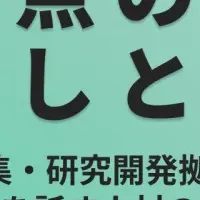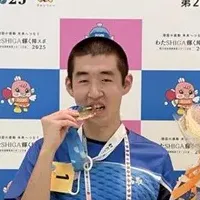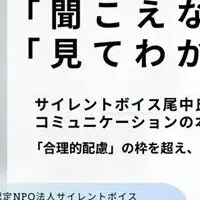
Exploring the Significance of He Culture During China's Spring Festival Celebrations
The Qingcheng Palace complex, located at the Xiannongtan Temple along Beijing's Central Axis, stands as the first ancient palace revitalized after the inscription of the Central Axis as a UNESCO World Heritage Site. This landmark has become a focal point during the Spring Festival, attracting visitors from both China and abroad who come to seek blessings for family harmony, prosperous harvests, and general well-being.
The essence of the Spring Festival lies deeply rooted in traditions that emphasize reunion and blessings. This ancient celebration embodies the spirit of renewal and vital energy, which have persisted throughout the ages despite shifting practices and interpretations over thousands of years. The core themes of family reunion, welcoming the new year, and praying for blessings remain as fundamental cultural touchstones for the Chinese populace.
In his remarks during a high-level reception for the New Year, Chinese President Xi Jinping highlighted the importance of reunion, diligence, and a better life as core aspirations of society. The Spring Festival, having been recognized on the Representative List of the Intangible Cultural Heritage of Humanity in 2024, has seen nearly 20 countries honor the event as an official public holiday. Today, approximately one-fifth of the global population takes part in various Spring Festival festivities, symbolizing a shared recognition and respect for He culture across borders.
This cultural celebration emphasizes harmony as a core value—specifically, the understanding that familial cohesion underpins national prosperity. The sentiment, 'a family is the smallest unit of a nation, while a nation is composed of countless families,' encapsulates this idea. As articulated by President Xi, the traditional virtues of respect for the elderly, care for the youth, and the importance of strong familial bonds shape the social fabric and sustain the nation.
The journey home for many during this festive period is marked by significant travel, often referred to as the largest annual population migration globally. For instance, stories abound of migrant workers traversing vast distances to reunite with families, highlighting the deep-seated commitment that individuals hold toward the tradition of returning home for the Spring Festival. These journeys are not without their hardships, illustrating the lengths to which individuals will go to fulfill their cultural obligations.
Beyond personal narratives, the celebration of the Spring Festival reinforces vital societal principles, where the happiness of families parallels the harmony found within the larger society. Historical practices, such as the deeds narrated in the Liuchixiang alley of Tongcheng, show the lasting importance of community and neighborly harmony.
The narrative extends further to touch on environmental stewardship and the relationship between humanity and nature. The Spring Festival also carries messages of ecological awareness, advocating harmony between people and their surroundings, reflecting an understanding of sustainable practices. This perspective is echoed by modern interpretations of cultural traditions that link agricultural cycles, emphasizing preservation and respect for natural rhythms.
As we observe new consumption patterns during the festival, we see the emergence of eco-friendly practices and creative expressions in celebrations, showcasing how He culture adapts with contemporary societal values. From the reclaiming of tradition in festive decorations to advanced technological integrations, the Spring Festival has transformed into a vibrant tapestry that showcases both history and innovation.
Lastly, amid a rapidly changing world, the cultural significance of the Spring Festival deepens, resonating with universal human aspirations for peace, connection, and renewal. This celebration fortifies the hope for a harmonious future, both within China and globally as people from diverse backgrounds come together to embrace shared values.
In conclusion, the Spring Festival is not solely a time for celebration, but a profound reminder of the enduring principles of He culture—justice, unity, and familial love. As families gather and communities celebrate, the festival serves as a powerful testament to the intertwined bonds of history, culture, and modernity that define contemporary Chinese society.
The essence of the Spring Festival lies deeply rooted in traditions that emphasize reunion and blessings. This ancient celebration embodies the spirit of renewal and vital energy, which have persisted throughout the ages despite shifting practices and interpretations over thousands of years. The core themes of family reunion, welcoming the new year, and praying for blessings remain as fundamental cultural touchstones for the Chinese populace.
In his remarks during a high-level reception for the New Year, Chinese President Xi Jinping highlighted the importance of reunion, diligence, and a better life as core aspirations of society. The Spring Festival, having been recognized on the Representative List of the Intangible Cultural Heritage of Humanity in 2024, has seen nearly 20 countries honor the event as an official public holiday. Today, approximately one-fifth of the global population takes part in various Spring Festival festivities, symbolizing a shared recognition and respect for He culture across borders.
This cultural celebration emphasizes harmony as a core value—specifically, the understanding that familial cohesion underpins national prosperity. The sentiment, 'a family is the smallest unit of a nation, while a nation is composed of countless families,' encapsulates this idea. As articulated by President Xi, the traditional virtues of respect for the elderly, care for the youth, and the importance of strong familial bonds shape the social fabric and sustain the nation.
The journey home for many during this festive period is marked by significant travel, often referred to as the largest annual population migration globally. For instance, stories abound of migrant workers traversing vast distances to reunite with families, highlighting the deep-seated commitment that individuals hold toward the tradition of returning home for the Spring Festival. These journeys are not without their hardships, illustrating the lengths to which individuals will go to fulfill their cultural obligations.
Beyond personal narratives, the celebration of the Spring Festival reinforces vital societal principles, where the happiness of families parallels the harmony found within the larger society. Historical practices, such as the deeds narrated in the Liuchixiang alley of Tongcheng, show the lasting importance of community and neighborly harmony.
The narrative extends further to touch on environmental stewardship and the relationship between humanity and nature. The Spring Festival also carries messages of ecological awareness, advocating harmony between people and their surroundings, reflecting an understanding of sustainable practices. This perspective is echoed by modern interpretations of cultural traditions that link agricultural cycles, emphasizing preservation and respect for natural rhythms.
As we observe new consumption patterns during the festival, we see the emergence of eco-friendly practices and creative expressions in celebrations, showcasing how He culture adapts with contemporary societal values. From the reclaiming of tradition in festive decorations to advanced technological integrations, the Spring Festival has transformed into a vibrant tapestry that showcases both history and innovation.
Lastly, amid a rapidly changing world, the cultural significance of the Spring Festival deepens, resonating with universal human aspirations for peace, connection, and renewal. This celebration fortifies the hope for a harmonious future, both within China and globally as people from diverse backgrounds come together to embrace shared values.
In conclusion, the Spring Festival is not solely a time for celebration, but a profound reminder of the enduring principles of He culture—justice, unity, and familial love. As families gather and communities celebrate, the festival serves as a powerful testament to the intertwined bonds of history, culture, and modernity that define contemporary Chinese society.
Topics People & Culture)










【About Using Articles】
You can freely use the title and article content by linking to the page where the article is posted.
※ Images cannot be used.
【About Links】
Links are free to use.